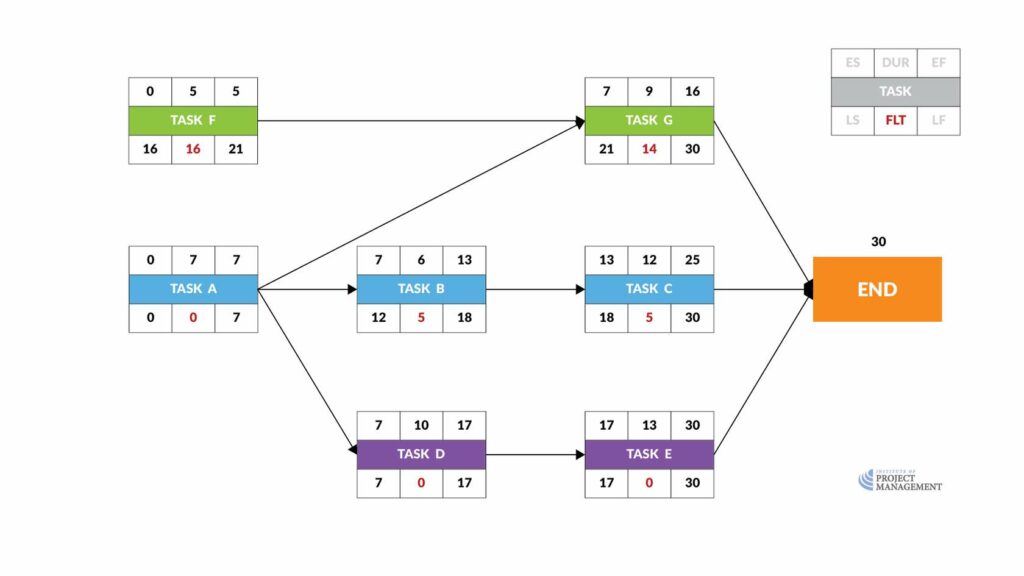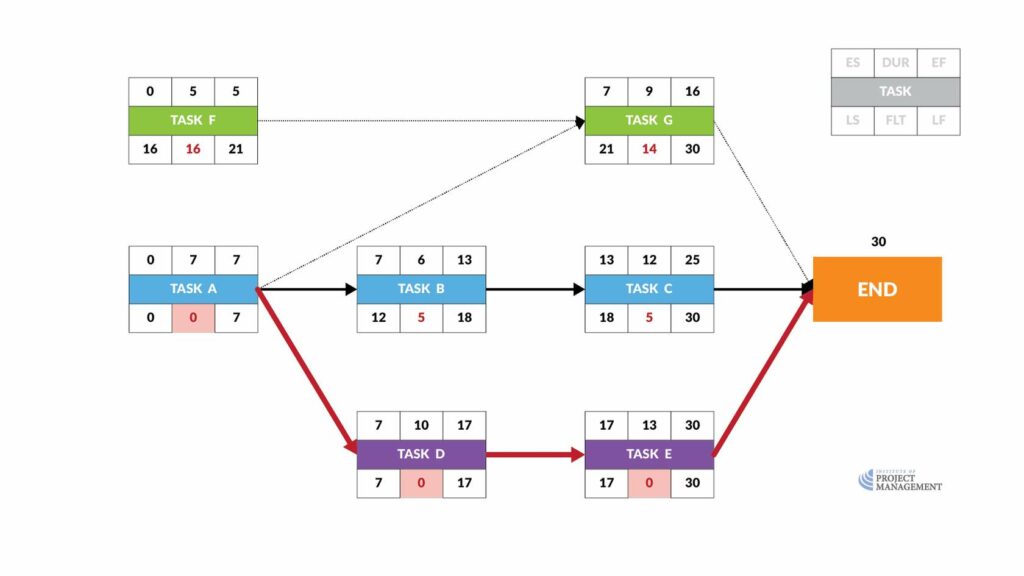Float
Remember how we said in the last topic that getting Task A started and finished on time is critical to the project’s success?

What this is showing us in project management terms is that there is no slack, or float, on Task A.
Float is the difference between either the late start and early start date or the late finish and early finish date: FLT = LS – ES = LF – EF
If you have done your forward and backward passes correctly, these two sums should always be the same.
Let’s see that in action.

As shown, the difference between the late start (Day Zero) and early start (Day Zero) is zero days. Similarly, the difference between the late finish (Day 7) and late early (Day 7) is zero days.
Therefore, Task A has a float of zero days; or to put it another way, Task A has no float.
Look, too, where we insert our float sum.
For Task B, the difference between the late start (Day 12) and early start (Day 7) is 5 days.
Similarly, the difference between the late finish (Day 18) and early finish (Day 13) is 5 days.
Therefore, Task B has a float of 5 days.

We can now perform this sum on every node on our network diagram.
Thankfully, there are no tricks to this as there were with the forward and backward passes!
The critical path
Critical paths are linked (dependent) tasks with zero or no total float.
In our example, the critical path flows from Task A to Task D to Task E.
The implication is that those are the activities whose schedule we must manage closely.

The mathematics of scheduling mean that every project will have a critical path – it is also possible for there to be multiple critical paths.
Projects can also have multiple near-critical paths.
In this instance, the path from Task A to B to C is a near-critical path – it, too, will warrant close attention.
Now think back to the discussion of estimating risk: if we have a low level of confidence in our time-to-complete estimates on a critical or near-critical path task, what do you think that might mean for project delivery?
It is also important to understand that the early and late start and finish dates are not the project schedule.
Rather, they indicate the periods when the task could be scheduled – we will look at this in more detail in the next few topics.
People often confuse the critical path with critical tasks.
Critical tasks are work packages that are prioritized by stakeholders as ‘important‘.
A task can be critical because it has no float (putting it on the critical path), but it can also be critical because the sponsor says so.
Critical tasking is a subjective activity – the critical path, on the other hand, has a very specific meaning.




